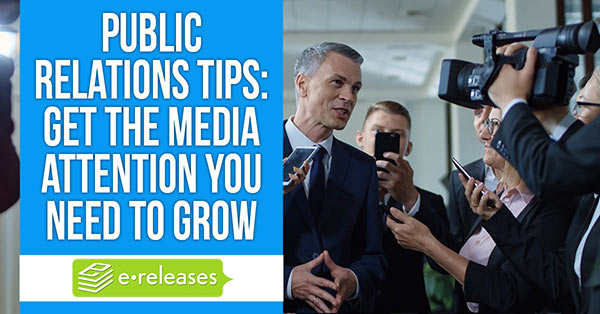
Table of Contents
It’s hard getting noticed in the vast wilderness of the internet. Your small business may feel like a tiny sapling under a canopy of tall trees. Without some light shone on you, you’ll never be able to grow.
The question you may be asking yourself is, how do you generate that light? How do you bring attention to your business? There are so many other businesses out there, and people only have so much attention to give.
You may have heard experienced business owners talking about the power of PR to bring a business into the light of consumers’ attention. If that suggestion doesn’t answer any questions for you, you’re not alone. We’re going to look at how PR is a strong strategy for promoting your business and how it can work with other strategies to help you grow.
What Does PR Stand For?
Probably the first question on your mind is, what does PR stand for? Public relations, or PR, is the process of communicating with your public or audience. Public relations strategies and tactics center around different ways to connect with your audience. PR involves using influencers, journalists, and social media to get in touch with people who would be interested in your business.
PR helps small businesses build brand awareness and credibility. Its goal is to shine a positive light on your business and the products and services you offer. It’s not a complete strategy for growing your business. Used with other approaches, it can make the difference between a company that thrives and one that withers away.
Focusing Attention on Your Business: Understanding the Pros and Cons of Different Strategies
Most people focus on three main areas when trying to promote their business: advertising, content marketing, and public relations. Each discipline has its pros and cons. Of course, it’s not a zero-sum game. You don’t have to devote all your resources to one type of promotion. You’ll find the most success with a mixture of strategies.
A Costly Strategy: Advertising
Advertising is probably the most obvious way to bring attention to your business. It tries to convince people that your product or service is what they need.
Advertising uses targeting and persuasion to get its job done. Targeting focuses on bringing your message to people who have an interest in it. In advertising, this often means identifying demographics that you’re likely to appeal to more than others. You figure out who your target audience is and where to find them.
With that knowledge in hand, you place your ads in appropriate venues. Design your ads to appeal to your target audience. Successful ads speak the audience’s language by using the same style of speech, slang, catchphrases, and keywords that fit the audience’s interests. They show the audience a relevant problem and offer a solution. Effective ads connect with the audience’s motivating emotions – hope, fear, pride, or need for security.
Advertising can be beneficial when done right. That’s the pro. The biggest con is that when advertising is done right, it can be expensive. Hiring a copywriter capable of delivering effective ads isn’t cheap. Paying for advertising space can add up quickly. If you’re not careful, you can spend all your profit trying to make a profit.
A Long-Term Strategy: Content Marketing
Content marketing isn’t a new idea. Television and radio’s quick ads made it fall from favor for a few decades. It is gaining traction again in recent years as businesses try to make their mark online. Content marketing is the strategy of using high-quality, engaging content to bring attention to your business.
Your goal with content marketing is not to sell directly to your audience. Your goal is to inform and entertain prospects. You want them to go through the whole process of “getting to know you.”
The first step in pulling that off is by making your audience aware you exist. Depending on your business, this might mean writing in-depth articles that show you’re an authority in your niche. It might mean providing quick tips in a video or on an infographic. Different audiences respond to different content, so knowing your audience’s preferences is essential.
Once your audience knows you’re out there, you use content marketing to build and keep a relationship. You keep offering useful information in articles or videos. You post uplifting or funny or thoughtful memes on social media for them to like and share. You keep them up to date on relevant news. Depending on the industry and audience, you might share personal anecdotes or successes to put a face on the people behind the business.
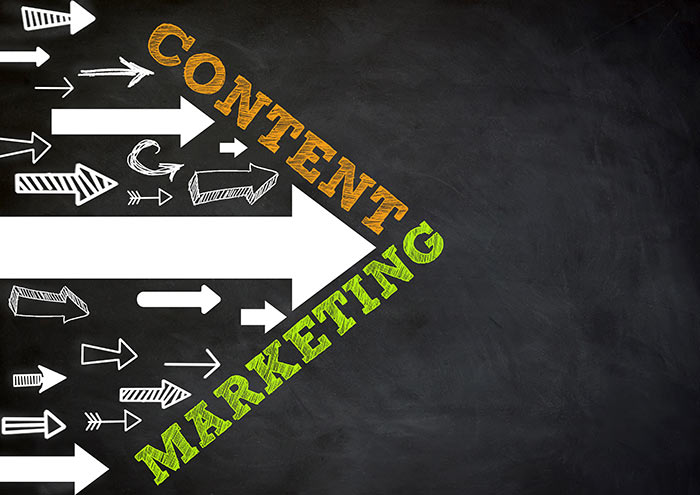
Content marketing has three main pros. First, it feeds the need for consumable content. The internet runs on content. Nearly everyone who spends time online is in search of information or entertainment in some way or another. When you continuously provide your audience with content they’re interested in, you give them a reason to keep coming back to you.
Second, content marketing is a relatively inexpensive way to bring attention to your business. The most significant expense lies in outsourcing the content if you choose to. You can also invest in some tools to help create and schedule your content. None of that is strictly necessary, however. It’s possible to use content marketing as an attention-getting strategy with very little expense at all.
Third, content marketing plays well with Google and other search engines, no matter how many times they change their algorithms. Search engines today are very efficient at finding content people want to read or watch. SEO, or search engine optimization, came into existence as a collection of strategies to make web content look like what the search engines wanted to find. Over the years, that’s involved everything from creating good content to hiding keywords in the background of a page so the search engine would think the page was a relevant result.
Good content marketing uses strategies to optimize content for search engines. What it doesn’t do is try to trick the search engine into thinking content is relevant when it isn’t. Effective content marketing provides honest-to-goodness real relevant content. By doing so, it gets search engine love for free and connects with your audience in a way that makes them trust you.
Sounds great, doesn’t it? Of course, there are a few cons to content marketing. The biggest is that content marketing typically takes time. Time to produce the content. Time for people to find the content. Time to build the relationship by showing you’re consistent with putting out good content over and over.
Content marketing is an excellent long-term strategy, but like advertising, it probably isn’t the only strategy you’ll ever need.
An Earned Media Strategy: Public Relations

Public relations is a strategy that uses tactics from both advertising and content marketing. Most business owners are reasonably familiar with both of these tools. Public relations are a bit more of a mystery. Sure, you’ve probably heard the term any number of times. But how do public relations work? What benefit does it bring to your business?
As stated before, public relations is all about communicating. Your business has a particular image you want to project. You provide specific products or services to distinct groups of customers. Your business needs to connect with them to show that you have what they need. You also need to show that you’re “their kind of people” so they feel comfortable doing business with you.
Small business PR strategies focus on showing how you’re a good fit for your customers. One of the primary resources used by both big and small businesses is the media. Both journalists and social media influencers can help spread the word about your business and lend it credibility.
To gain the kind of attention you want from media sources, you need to understand how PR media strategies differ from advertising and content marketing.
What Is Earned Media in Public Relations?
PR utilizes a concept called “earned media.” What is it? In short, it’s the opposite of advertising.
When you advertise, you pay rent for advertising space. It may be a literal space like a billboard or a section of a newspaper or magazine page. It may be virtual space across a webpage or between levels in a game. You get attention through your advertisements, but you pay for the privilege. When you use content marketing, you provide content as a way to connect with and engage your customers. You may or may not pay for content marketing, but your only proof of authority is the quality of your content.
You can get earned media in a variety of different ways. Some earned media examples include news stories about your grand opening or an award your business won. Other earned media examples might be reviews or recommendations given by third parties not connected to your business. When you use earned media, you’re getting attention directed toward your business through your actions rather than by paying for it. An outside authority vets your credibility. Think of it as the difference between these three strategies:
- Running an ad that says you have the best barbecue in town. Your ads get people thinking about your place, but it costs money. It’s also not 100% credible because you’re paying someone to say your barbecue is good.
- Posting content that shows you have the best barbecue. For example, you might put up a recipe for “Town’s Best Barbecue Sauce” on your blog. People can try your method and see if they think it’s the best, share your recipe with others, and post pictures of the barbecue they made with your recipe. It’s excellent engagement and mostly free. However, you still have the problem of credibility. The title of your blog post isn’t objective proof that your barbecue is the best.
- Giving an interview about how you won the town’s barbecue competition. When the podcast or interview is published, you get free publicity. More importantly, your claim to “best barbecue” has credibility because it an authority awarded it – the competition judge – and verified by someone else – the journalist doing the interview.
You can get earned media attention in a variety of different ways. Some earned media examples include news stories about your grand opening or a charity drive your business is hosting. Even a story about how your company had a setback can be turned into positive press if you focus on how you’re coming back stronger than ever.
Other examples might be reviews or recommendations given by third parties not connected to your business. Yelp, Angie’s List, and Google Reviews are examples of other popular sites that can provide you earned media opportunities.
Earned Media vs. Paid Media

Some business owners are successful in using advertising alone to bring attention to their business. Most business owners find that they get more benefits at a better cost when they diversify their strategies. That’s why you see so many successful companies involved in content marketing and public relations, as well as advertising. When comparing earned media vs. paid media, most people focus on the cost. Earned media is free, at least in terms of up-front payments. Advertising nearly always costs money.
An even more critical factor is how much earned media can build trust in your business. People are so used to advertising claims that they have a natural skepticism about how honestly an ad shows a product. Fake food, airbrushed models, and ad copy that makes a product or service sound amazing are expected parts of advertising.
The nature of earned media makes it more trustworthy. When someone is reading a news story, they trust the journalist to have checked the facts. When someone reads a review, they expect the reviewer to share their real experiences. This trust comes from the distance between the journalist or reviewer and the business. The business, of course, wants to sell itself. The journalist or reviewer doesn’t have a vested interest in whether the company succeeds. They want their audience to see them as honest and reliable so that their content retains its credibility.
Earned Media Isn’t Just a Happy Accident
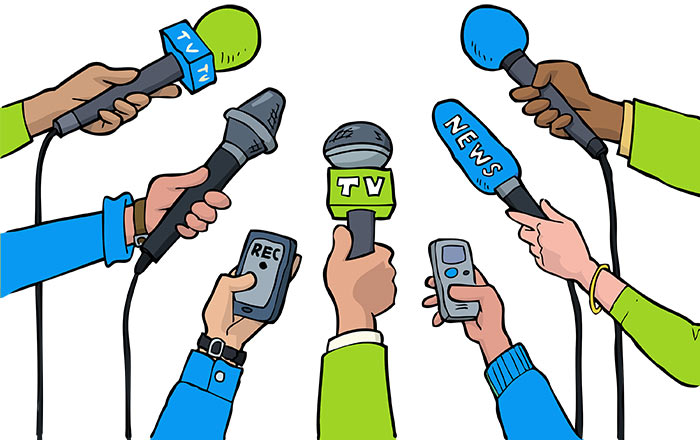
Earned media is a valuable tool for public relations because it’s authentic and believable. However, it would be a mistake to think that it happens by accident. No, it’s not impossible to get positive, spontaneous news stories, social media mentions, or reviews about your business. It’s just not that likely to happen without some intervention on your part. That’s one area where public relations comes in.
But how, you might be thinking, does it count as earned media if I’m out there promoting my business to every influencer I can find?
First of all, don’t promote your business to every influencer you can find. We’ll talk more about that later. For now, just remember quality over quantity.
Second, remember the difference between earned media vs. paid media. You’re not buying advertising space when you let a journalist know there’s a potentially exciting story about your business. You’re giving them the information and letting them decide if they want to use it.
That, as we discussed earlier, is the power of earned media. The journalist decides if the story is both exciting and credible. They have a good idea of what content their audience likes. Their audience trusts them to vet that content to make sure it’s relevant and accurate. The journalist acts as a gatekeeper. If your business story makes it through the gate, it’s already got built-in authenticity.
The same gatekeeping happens when a social media influencer recommends your business or one of your products. At least, it does if you’ve carefully chosen the influencer. If they have a reputation of being on the up and up, your business will gain credibility when they recommend you.
What’s important to remember is that the influencer has control over if and how they mention your business. You may bring your products to their attention. Only they can decide if they’re going to recommend it to their followers. Because you’ve “earned” your mention by providing a product they like, you also gain credibility in the eyes of their audience – your potential customers.
Public Relation Strategies and Tactics for Gaining Earned Media Attention
At this point, you can see how valuable earned media is for bringing positive attention to your business. You know that you can’t wait around for media influencers to notice you. You will have to employ some public relations strategies and tactics to get the attention you need to keep your business growing.
What you’re probably still wondering is how to get PR campaigns going that effectively use earned media. We’ll look at some of the best PR tips for using the media to help your business thrive.
Overall, we’ll be looking at small business PR tips and strategies. Tips for most small business owners are different from tips for big businesses. Small business owners frequently have to do everything themselves. If they do have a PR department, it’s not very large. Maybe one or two people who have to think creatively to get the best benefits for the company on a strict budget. The PR tips we’ll be discussing will focus on the rule of “working smarter, not harder.”
Before we look at specifics, let’s talk about the overall goals that should guide any small business PR efforts.
PR Tips for Small Business #1: Know Your Image and Stick to It

Small businesses need to stand out from their competitors to avoid getting overlooked. They need a unique brand and story to create an image that reflects their business’s core strengths. Public relations strategies for a small business should always have the business’s brand in mind.
PR is essential for building a business’s image in the minds of the public. Most of the time, readers only see the part of the company that falls under the PR umbrella. If the business’s statements and actions aren’t consistent with the image they try to portray, the company will seem untrustworthy and inauthentic.
For example, picture a brand that strives to project a “family-friendly” image. PR strategies that support that image might include posting social media tips for keeping kids entertained in the summer or submitting a story to the media about the company’s school supply give-away. A meme about wild partying at the end of summer wouldn’t support their intended image at all. It might drive off some parents who didn’t feel like the company would show good judgment when it came to their children.
When you have a clear idea of the image your business is trying to project, it’s not difficult to test any content public relations ideas you’re considering against that image. If it doesn’t help support your business’s brand, it shouldn’t go out to the public.
A key component to projecting an authentic image is having a consistent voice that “matches” your intended audience. In most cases, a business with investment bankers as clientele would use a different style of communication than a business marketing toward wealthy college students looking for vacation opportunities. The dependable, business-like manner needed for the bankers would not engage the students. Neither would the carefree, exciting style aimed at the students instill trust in the bankers.
How do you discover what voice matches your audience? That question brings us to our next tip.
PR Tips for Small Business #2: Be Where Your Audience Is
This tip has two meanings. First, be where your audience is. Put your content, your ads, your PR promotions in places your audience naturally goes. Research where your potential customers like to spend their time online, what media they consume, who they listen to, and who they avoid. Doing this will ensure that people who are interested in your message get to see it. It also helps you avoid wasting time and money on people who have no interest in your business.
Second, be where your audience is and spend time in their spaces. Listen to them. Get to know them. Learn the language they use, the turns of phrase, the slang, or the industry jargon. The more you know your audience, the more you can engage in genuine communication with them.
PR Tips for Small Business #3: Stay In Front of Problems
This tip is probably one of the most crucial public relations tips for any business. If a customer has a problem with your business, it can become a public relations nightmare. A few negative posts on Facebook or Twitter can result in a bad reputation that your company struggles to overcome for years. It’s essential to get out in front of the problem with a two-pronged approach.
- Develop a good reputation from the start. If potential customers already have a favorable opinion of your business, they’re more likely to view a complaint as a one-time mistake, not an ongoing problem. Build your reputation through positive news stories, community involvement, and good reviews.
- Address the customer’s problem when it comes up. Remember that the public is watching everything on social media. Treat the customer respectfully and do what you can to resolve the issue. Take ownership of whatever mistakes or miscommunication on your part contributed to the problem. Hopefully, you’ll be able to fix the situation with the customer. If you handle the public relations well, you’ll show all the people watching via social media that you’re someone they can trust.
With these broad PR guidelines in mind, let’s look at some specific tips for how to get PR success for your small business. The particular public relations tips we’ll discuss will cover an area that is a challenge for many small business owners – how to get noticed by the news.
How to Get Your Story on the News

Positive news stories can bring attention to your business. They can help create and maintain a good reputation. Over time, they can help increase your profits.
They also present a bit of a learning curve in terms of how to get stories into the news. Notifying journalists that you have a newsworthy story about your business isn’t quite as easy as calling up the local newspaper and talking to Clark Kent.
For one thing, your local newspaper might not be the best fit for the story. For another, journalists have to sift through a wide variety of garbage every day. If you send your release to whatever random journalist or editor you can scrounge up, it is likely to get lost among all the other stories they’re considering.
That doesn’t mean journalists aren’t interested in your story at all. Public relations sources are used by 25 percent of journalists to find newsworthy events and expert commentary. You simply have to find the right journalist at the right publication.
Remember, when we said one of the most crucial public relations tips for getting your business noticed in the media was quality over quantity? That’s the guiding principle you want to remember. It doesn’t matter how many media outlets you submit your story too if none of them have an interested audience.
As stated before, good PR involves communicating with your audience and being where they are. If you’re in communication with your potential customers, you should have a pretty good idea of what media they consume.
Sometimes figuring out your audience’s preferred media is as simple as looking up popular industry publications. If your business’s niche is too broad to tie to a specific industry, you may have to do more research. You can get clues by looking at the sources of the stories and videos your potential customers share.
Most publications have press kits or demographic information on their website to help you identify if a specific media outlet is a good fit. There are also public relations tools you can use to identify journalists in your field. For example, Meltwater has a Media Monitoring function that helps you stay on top of current media conversations and the people involved in them.
PR Tips How To Pitch to a Publication
Once you’ve narrowed down which publications are best for your purposes, you’ll need to make a pitch. Keep in mind that editors deal with many such requests every day. As we said earlier, 25 percent of journalists use public relations sources, many through pitches, just like the one you’re going to send. Because of that, you want your ask to be short, exciting, and relevant.
In the following public relations pitch example, note that the email is only a few sentences long. You’re not wasting the editor’s time by making them read a novel. You’re getting straight to the point.
Notice that the public relations pitch example includes a few interesting facts about the subject. It also explains why the topic is relevant to the editor’s publication. In the end, there is a suggestion for what action the editor can take.
Finally, be sure to hyperlink your business name and the product the first time you mention each one.
Public Relations Pitch Example:
|
Dear [Editor], |
If you’re pitching an event or an interview with a person, simply adapt the example to fit. The basics are the same:
- Keep it short.
- Explain what you’re offering.
- Explain why it’s exciting.
- Explain how it’s relevant.
- Suggest the next step (set up the interview, send the product, etc.).
More PR Tips for Getting Media Attention: Press Releases and HARO
In addition to sending pitches to the editors of publications in your niche, two more public relations tips work well for small business owners. You can send out press releases, and you can sign up for HARO. We’ll look at each one in detail and discuss ways to use these earned media sources to your advantage.
What is a Press Release?
A press release is a notification of a newsworthy story. It’s different from a pitch in a few ways. First, it’s intended to be an objective description of the newsworthy event. It’s a short, exciting account of what happened that is designed to catch a journalist’s attention.
A pitch also catches attention and meant to sell the journalist or editor on the idea of a story. A pitch hints at the details while a press release describes them.
Carefully crafted press releases give all the information needed in a short span. They include the information you’d typically find in a news story along with a compelling headline to catch the journalist’s attention. Although press releases generate publicity when done right, they shouldn’t include a sales pitch or any blatant attempt at advertising.
After writing your press release, you need to get it out to journalists who would be interested. One option is to pitch the press release to any journalist contacts you have that might be interested.
Another option is to use press release distribution services like eReleases or PR Newswire. These services can give you a wider reach than you might have worked by yourself. Some can help you target your press release to the best publications for your industry.
What is Haro?
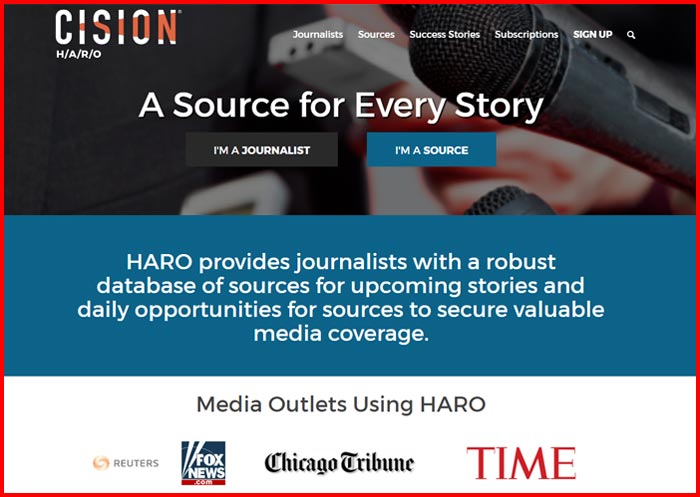
Another public relation tool you can use is Help A Reporter Out, or HARO. Journalists who are working on a story often need expert commentary to present accurate information. Quotes from trained professionals give stories credibility in the eyes of readers.
However, it’s difficult for journalists to find time to track down multiple professionals for every article they write. That’s where HARO comes in. It’s a service that allows journalists to connect with industry professionals willing to share their expertise.
What is Help A Reporter Out able to do for small business owners? It serves two purposes. It gives you a chance to get your name and expertise in front of the public. When you answer a journalist’s request for information, you may get quoted in their article. Free publicity rocks, right?
HARO also gives you a chance to develop contacts among journalists who cover your industry. If you give journalists useful information when they request it, there’s a good chance they’ll remember you the next time they have a question.
How Does HARO Work?
HARO is one of the more straightforward public relations tools to use. You go to the Help A Reporter Out website and sign up for their service. Make sure you register as a “Source” since you want to provide information to journalists. Although there are paid options, the free registration gives you what you need to get started. You can always upgrade later if you find the additional benefits worth the money.
When you sign up, you’ll indicate your industry. You’ll get emails up to three times a day with requests from journalists for quotes about specific topics.
Many of these requests will have specific requirements. Be sure you fit the needs before responding. If you’re not a good fit, you’re wasting your time and the journalists.
When you respond, give an answer that has some thought and an interesting angle to it. Your response won’t be the only one the journalist sees. You want it to stand out while being accurate and thorough. You’ll include your contact information and credentials in your response.
If your response wins, it gets published in the article. Keep in mind that some pieces you will wait months for it to go live, so you may have to be patient. Set up Google Alerts to help you keep track of when your name and business get mentioned in the press.
Make sure to follow up with a thank you to the journalist once your response is published. Not only is it polite, but it also leaves a good impression with the journalist. In your thank you, you can offer your services again if they’re ever needed.
Help A Reporter Out Alternative Service
As useful as HARO is, it’s a well-known resource among many public relations professionals. In addition to using HARO, you may find that ProfNet is a good alternative. It works much the same way as HARO. However, you may have a better chance of having your response chosen by a journalist because there’s less competition.
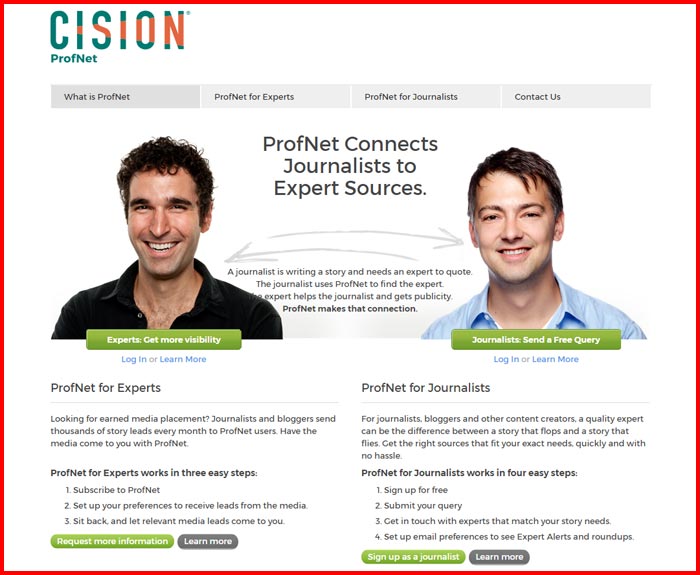
Other Influencers
One more factor to consider when thinking about how to get PR benefits from earned media is influencers outside the press. People from all walks of life can share their stories with the world on social media. If their story intersects with your business, you might have access to some powerful public relations tools.
One of the most believable recommendations for any product or service is the word of a friend. Of course, the makeup artist on Youtube or the fashionista on Twitter might not be your customer’s personal friend. That doesn’t matter if your customer has been following them for a while. Trust and credibility are already there, and you can tap into those feelings.
Social Media Influencer PR Tips: How to Get on a PR List
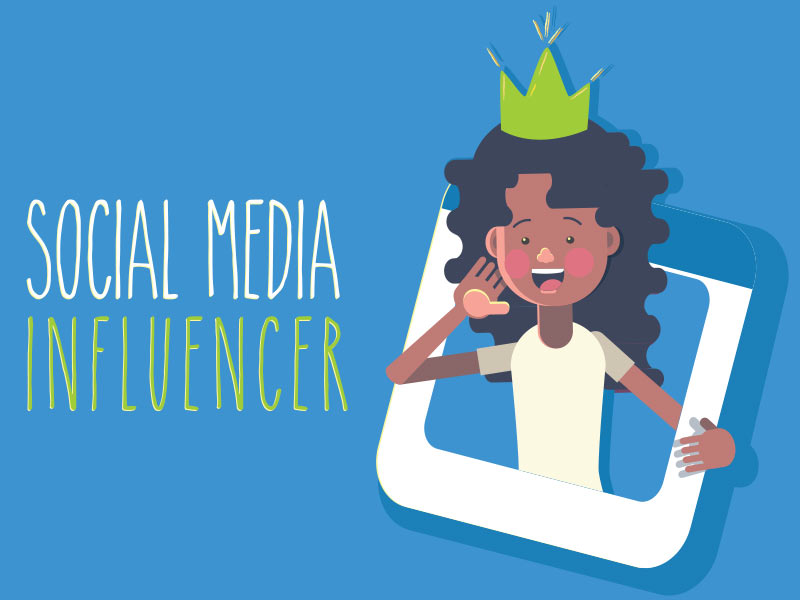
If you’re wondering how to get on a PR list to have your products or services reviewed by one of these influencers, it’s typically more straightforward than connecting with a journalist.
You should start by carefully picking the influencers you want to contact. They should be people who appeal to your target audience. More importantly, they should be people who fit well with the image your company projects. Be sure to do your research into various influencers before contacting them. Quality over quantity applies here, too.
When you find some influencers, who seem like they’d be a good fit for your brand, reach out to them with a pitch similar to the one you’d send to an editor. Some useful guidelines to follow are:
- Mention specific details about their social media content that you liked.
- Mention and hyperlink your business and tell what you’re about (services and products).
- Tell them you’re looking for an honest review of [product/service name].
- Give specific PR campaign examples like the number of posts, reviews, etc.
- Tell them what you’re offering in return (money, free products, etc.).
- Ask them to contact you and close with your contact info.
PR Campaign Examples

Now that you know how to get the attention of a journalist or influencer, it’s time to think about tips on how to make your PR portfolio stand out. When we look at PR campaign examples, we have some excellent models of PR success to use as inspiration.
One of the biggest is customer engagement. For example, McDonald’s looked at Twitter comments and saw an ongoing trend of requests for “all-day breakfast.” They responded by connecting with Twitter users, answering questions, and of course, offering some all-day breakfast options.
Mattel listened to complaints about how Barbie had an unrealistic body shape and no ambition. They responded with a redesign and an ad campaign that showed Barbie achieving a wide variety of different career goals.
Doritos engaged with their fans and allowed them to produce Doritos’ Super Bowl ad.
Each company saw an increase in sales. What do all of these examples have in common? The companies listened to their customers. They gave their customers a chance to influence their decisions. In the cases of McDonalds and Mattel, they used customer feedback to solve problems. In Doritos’ case, they used customer feedback to make a Super Bowl ad.
As a small business, you may be able to design a PR campaign that gives your customers some influence on specific business decisions. You can listen to customer complaints and make changes when needed. Whenever possible, you can turn your PR campaign into a newsworthy story that will shine a positive light on your business.
Public Relation Tools for Measuring the Impact of Earned Media
The final strategy on our list of public relations tips is to monitor your PR impact using public relations tools.
We already talked about Google Alerts. It is a free service from Google, which lets you set alerts for when specific keywords get used online. You can track when your name or the name of your business is mentioned anywhere on the internet.
Mention is a similar service. It provides analytics that helps you see who is mentioning your business and how often.
Meltwater, as mentioned previously, is a good source for identifying journalists in your field. It’s a useful tool with many more functions, including the ability to track your public relations KPI or key performance indicators. By monitoring indicators such as your potential reach, social media engagement, and the quality of the coverage you’re receiving, you can figure out what PR strategies are giving you the most return for your effort.
The Power of Earned Media for Small Businesses
No business can grow if it sits unnoticed among its more active competitors.
For a company to thrive, it needs a carefully chosen set of strategies that put it in front of potential customers. Advertising and content marketing have their place in this plan, but PR provides a valuable source of publicity that connects with your customers.
The credibility that comes from using earned media strategies makes PR publicity even more useful.
By connecting with journalists and other influencers and utilizing the power of different forms of media, small business owners can help their business succeed.